Your iPad’s keyboard stops working when you fail to type with it or it doesn’t connect with the pad. The issue is reported on Apple-based as well as with 3rd party keyboards. The problem generally occurs after an iPadOS update.

In this article, we will discuss the causes of the keyboard issue on the iPad and how to fix it.
Before proceeding, make sure that your keyboard’s hardware is working correctly. You can confirm this by using the keyboard on another computer or device. Ensure that no key on the keyboard is stuck in a pressed position. Moreover, if another accessory like a Bluetooth mouse is connected to the iPad, confirm none of its buttons is stuck in a pressed position.
Why Doesn’t Your Keyboard Work with Your iPad?
- Assistive Touch: Assistive Touch manipulates the device’s input and its interference with the input modules can stop the keyboard from working.
- Conflicting Soft Keyboards: Soft keyboards (such as Gboard) are touch-based keyboards for your iPad. If any of these keyboards fail to release an essential input component, the iPad’s keyboard will stop working.
- Invalid Keyboard Dictionary: The iPad’s keyboard uses its dictionary to adapt to your typing habits and words. If the modules holding the dictionary configurations are no more valid, the keyboard will stop working.
- Debris on the Keyboard Connectors: The keyboard of your iPad will not work if debris is present on the keyboard’s connectors. Due to this, a required connection will not establish between your iPad and the keyboard.
How to Fix your Keyboard not working with an iPad?
We will start with the most basic workarounds to get your keyboard working again and move our way up to more advanced solutions. Please follow the steps in order.
1. Enable and Disable the Airplane Mode
Your iPad will fail to use the keyboard if the device’s communication modules are malfunctioning. Due to this, the OS “thinks” that another keyboard (such as a Bluetooth keyboard) is present and is expecting inputs through that keyboard. Here, enabling the airplane mode of the iPad will solve the issue.
- Launch the iPad Settings and enable Airplane Mode.
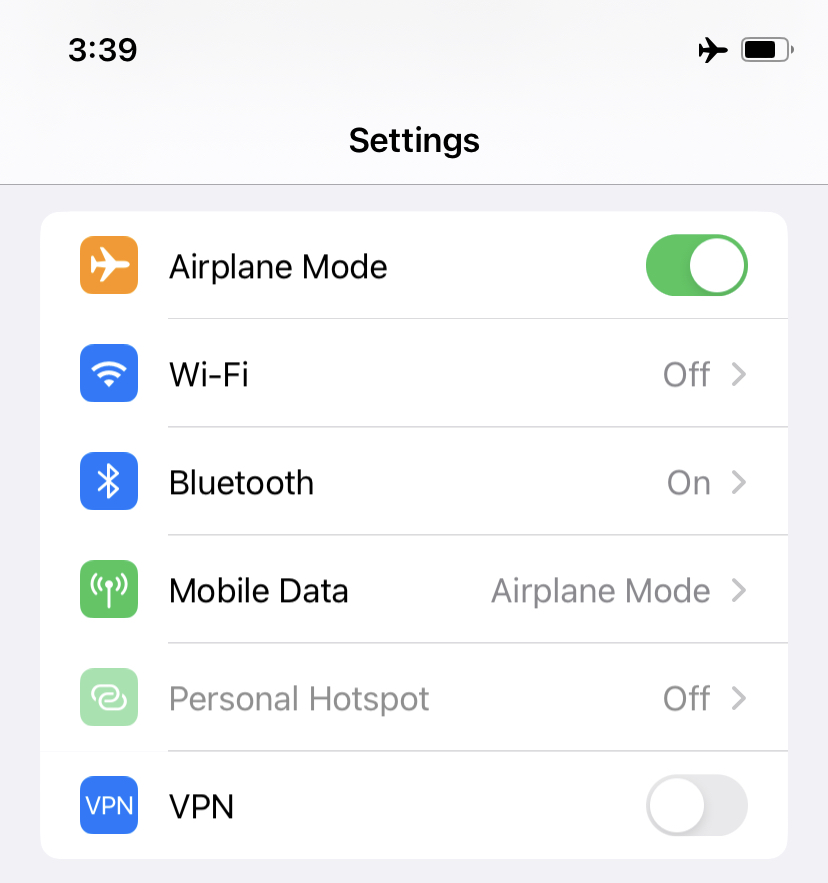
Airplane mode on iPhone - Check if the keyboard is working properly. You can disable the iPad’s Airplane Mode afterward. If the problem reappears, make sure any electromagnetic interference is not causing the issue.
2. Perform a Force Restart
The keyboard will not function if the pad’s communication modules are in an error loop and need a fresh start to reestablish the communications. To fix this, perform a force-restart of the iPad.
iPads with a Home Button
- Press and hold the iPad’s following buttons at once:
Top Side
- Wait till the screen shows the Apple logo (do not release the buttons on the power menu) and release the buttons. Check if the iPad’s keyboard has started to work.

Force Restart an iPad With a Home Button
Other iPads
- Successively tap on the iPad’s volume up and volume down buttons.
- Press and hold the iPad’s top button till the screen shows the Apple logo.

Force Restart the iPad With a Top Button - Release the button and verify if the iPad’s keyboard is working as expected.
If the problem was cleared on force restarting but reappears later, see if putting the iPad to sleep and then waking it makes the keyboard work. You can also check if locking or unlocking the iPad makes the keyboard work.
3. Update the OS to the Latest Version
You will experience keyboard issues on the iPad if the device’s OS is outdated. This can cause incompatibilities between the Apple device and the keyboard. Additionally, a bug in the iPadOS can also cause issues. In either case, updating the device’s OS to the latest build will do the trick.
Before updating, connect the iPad to a Wi-Fi network and make sure its battery is charged to full.
- Navigate to iPad Settings > General > Software Update.

Open Software Update in the General Settings of the iPad - If an iPadOS update is present, tap on Install Now.

Update the OS of the iPad to the Latest Build - Once done, restart the iPad and determine if the keyboard is working correctly.
- If that did not work, check if updating the iPad to the latest beta does the trick.
4. Disable Wi-Fi or Use Another Trusted Network
When an iPad with sensitive information is connected to a non-trusted or public Wi-Fi network, the operating system’s security features might disable the keyboard to safeguard your privacy and security. Furthermore, there is a known bug in iPadOS that can cause this issue when the device is connected to a non-trusted or public Wi-Fi network.
To verify if this is the case, disable the Wi-Fi on your iPad.
- Navigate to Settings > Wi-Fi.
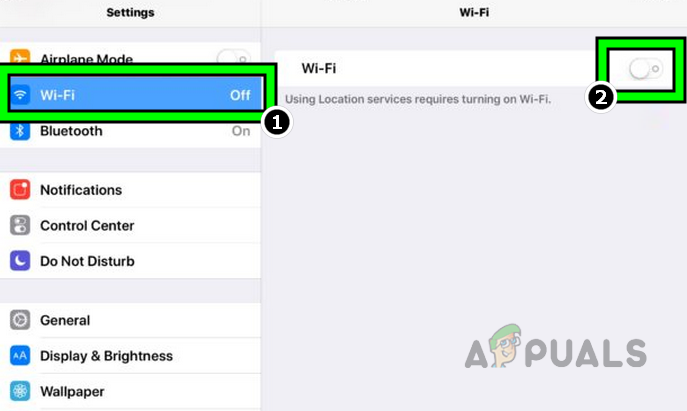
Disable Wi-Fi on the iPad - Disable Wi-Fi and check if the keyboard is working properly. If so, then you can enable Wi-Fi and connect it to a trusted Wi-Fi network (like your Home network).
5. Disable Bluetooth or Delete Old Bluetooth Devices
Your iPad’s keyboard will fail to work if the OS incorrectly detects a Bluetooth keyboard and due to a bad configuration of the device, it suppresses the input command from the actual keyboard in use. This can be fixed by disabling the iPad’s Bluetooth or deleting old Bluetooth devices or keyboards from the iPad.
- Navigate to Settings > Bluetooth.
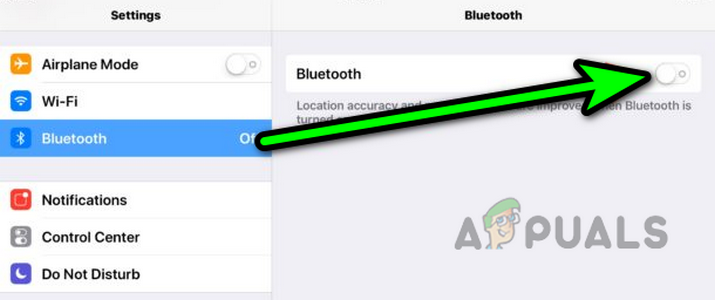
Disable Bluetooth in the iPad’s Settings - Disable Bluetooth and check if the keyboard is working properly.
- If that did not work, navigate to Settings > Bluetooth.
- Tap on the info (i) icon for the keyboard and select Forget This Device.

Forget This Device for the Keyboard in the iPad’s Bluetooth Settings - Confirm to remove the keyboard and repeat the same steps with all other Bluetooth devices.
- Once done, perform a force restart on your iPad and see if the keyboard is operating properly.
6. Remove Third-Party Soft Keyboards
The iPad’s keyboard will stop working if a soft keyboard (such as Google Gboard) on your device is not releasing a module essential for the operation of the physical keyboard. To resolve this, remove the additional soft keyboards from the iPad.
- Navigate to Settings > General > Keyboard.
- Tap on Edit and remove all the non-default keyboards.

Open Keyboard in the General Settings of the iPad - Perform a force restart on your iPad and verify if the keyboard of your iPad is working properly.

Delete Keyboards in the iPad’s Keyboard Settings - If the problem continues, check if disabling iMessage solves the problem. You can always enable it again afterward.
If the issue persists and you have any of the following apps, check if uninstalling those apps resolve the issue:
- Facebook Messenger
- Linea
- Quick Note
If the issue is occurring with a single app (like Adobe Illustrator), check if updating or reinstalling the problematic app resolves the issue.
7. Disable Mouse Keys in the iPad’s Settings
Enabling the Mouse Keys feature on your iPad will make the keyboard keys act as a mouse. Even though this is a nifty feature, it can break the regular operation of the keyboard. This can be especially true if some keys on the keyboard do not work but others work.
In this case, disabling the Mouse Keys in the iPad’s Settings will resolve the issue.
- Navigate to Settings > Accessibility > Touch > Assistive Touch > Pointer Devices > Mouse Keys.

Disable Mouse Keys in the Accessibility Settings of the iPad - Disable Mouse Keys and check if the keyboard is functioning properly.
8. Disable the iPad’s Assistive Touch
Enabling the Assistive Touch feature on your iPad can interfere with the keyboard’s operation, as it manipulates the input to the device. This can cause the keyboard to stop working properly. This can be fixed by disabling the Assistive Touch feature on the iPad.
- Navigate to Settings > Accessibility > Touch > Assistive Touch.
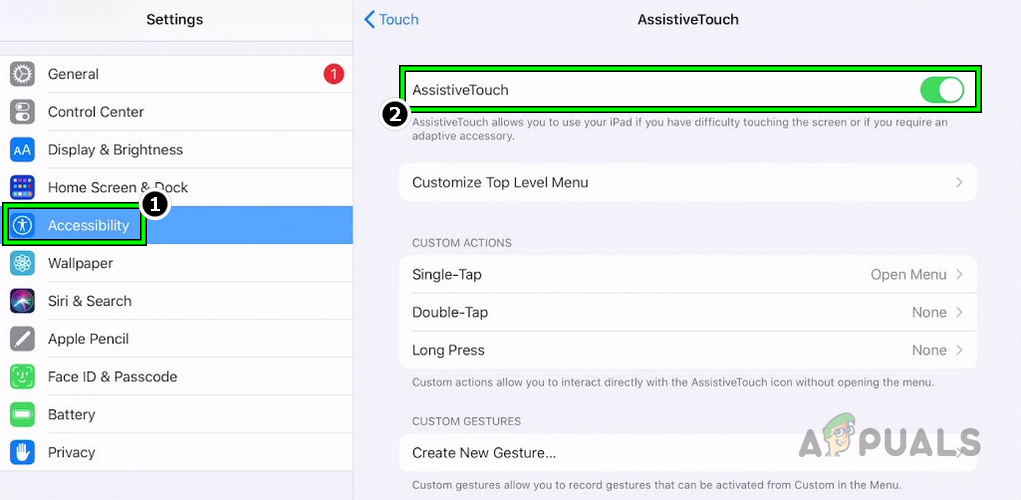
Disable AssitiveTouch in the iPad’s Settings - Disable Assistive Touch and check if the iPad’s keyboard is working fine.
9. Disable Full Keyboard Access on the iPad
An iPad can be controlled by a keyboard after enabling Full Keyboard Access. If this feature is enabled, your keyboard will start controlling the pad but might cause issues with typing. To fix this, disable Full Keyboard Access on the pad.
- Navigate to Settings > Accessibility > Full Keyboard Access.
- Disable Full Keyboard Access and ensure that the keyboard on the iPad is working correctly.

Disable Full Keyboard Access in the iPad’s Accessibility Settings
If that resolves the issue but you want to keep the Full Keyboard Access feature enabled, then you may edit the keys settings in the Full Keyboard Access as per your requirements.
10. Disable/Enable Predictive Text on the iPad
The Predictive Text feature on an iPad offers suggestions for words that may follow while typing. However, this feature’s reliance on keyboard input can interfere with keyboard operation and lead to typing issues. In this scenario, disabling the Predictive Text feature on the iPad will solve the problem.
- Navigate to Settings > General > Keyboard.
- Disable Predictive and Shortcuts. If already disabled, enable them.

Disable Predictive and Shortcuts in the iPad’s Keyboard Settings - Force restart the iPad and see check if the iPad’s keyboard is operating normally.
11. Disable Scribble in the iPad’s Pencil Settings
When using the Apple Pencil on the iPad, the Scribble feature enables handwriting recognition. If this feature consumes a resource necessary for the keyboard, the input device will become unusable. In this case, disabling the Scribble feature on the iPad will do the trick.
- Navigate to Settings > Apple Pencil.

Open Apple Pencil in the iPad’s Settings - Disable Scribble and see if the problem is solved.
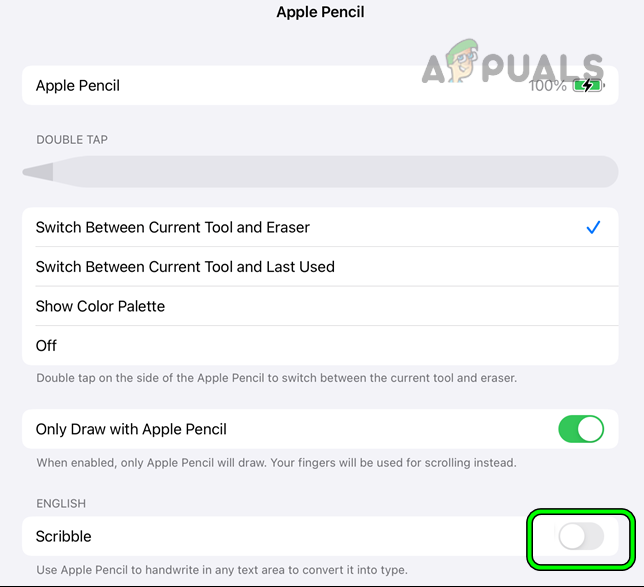
Disable Scribble in the iPad’s Apple Pencil Settings
12. Disable the “Speak Screen” Feature of the iPad
If the Speak Screen accessibility feature is enabled on the iPad, the device will audibly read the content displayed on the screen. However, if the feature interferes with the keyboard’s operation by attempting to read input, the keyboard might malfunction. In this case, disabling the Speak Screen feature on the iPad will resolve the issue.
- Navigate to Settings > Accessibility > Spoken Content.
- Disable Speak Screen and force restart the iPad. See if the issue is resolved.
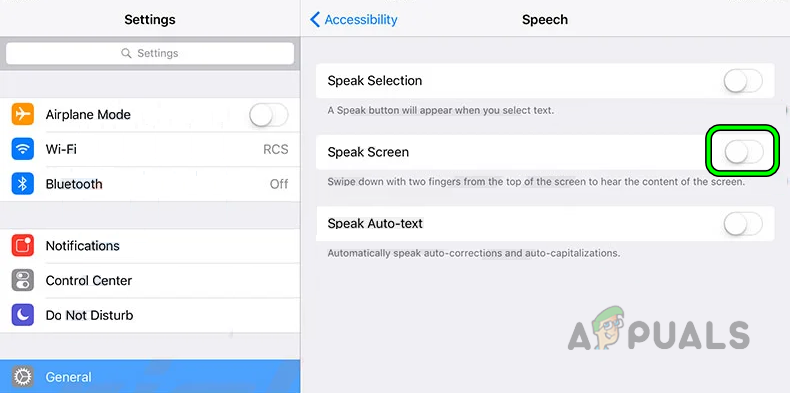
Disable Speak Screen in the iPad’s Accessibility Settings - If that did not work, disable Voice Control in the iPad’s Accessibility settings and check if that resolves the issue.
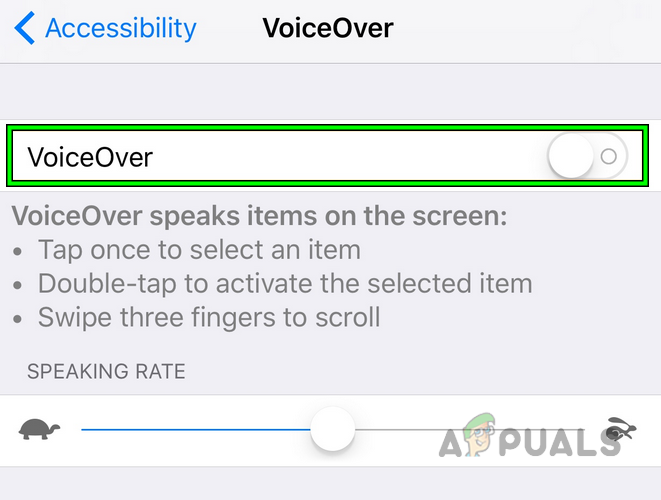
Disable Voice-Over in the Accessibility Settings of the iPad
13. Reset the Keyboard Dictionary
If your iPad’s keyboard isn’t functioning properly, it could be due to an issue with the keyboard dictionary. This component plays a vital role in the typing process, so any issues could significantly impact keyboard performance.
To resolve this, you can reset your keyboard dictionary. Doing so should restore the dictionary to its default state, potentially fixing any problems you’re experiencing with the keyboard.
- Navigate to Settings > General > Reset.
- Reset the Keyboard Dictionary and check if the keyboard is functioning properly.
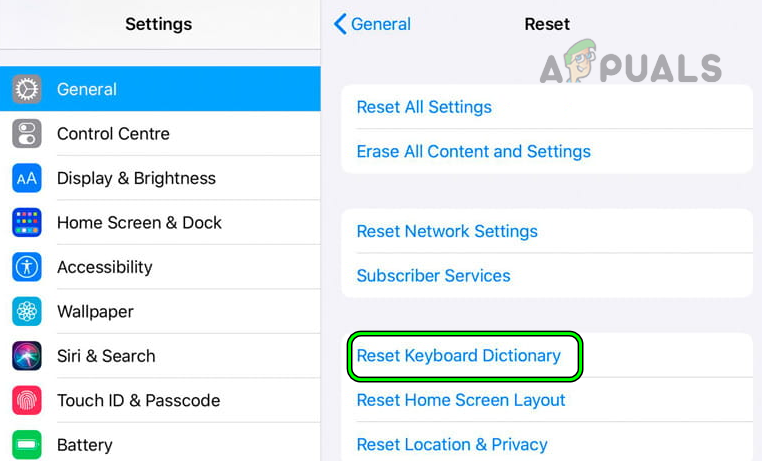
Reset the Keyboard Dictionary in the iPad’s Settings
14. Reconnect the Keyboard
If the communication modules of the device are malfunctioning or if the keyboard is not properly connected to the iPad, the keyboard will not operate correctly. To resolve this issue, reconnect the keyboard to the iPad.
- Disconnect the keyboard from the iPad and force restart the iPad.
- Reconnect the keyboard to the iPad and check if that resolves the issue.
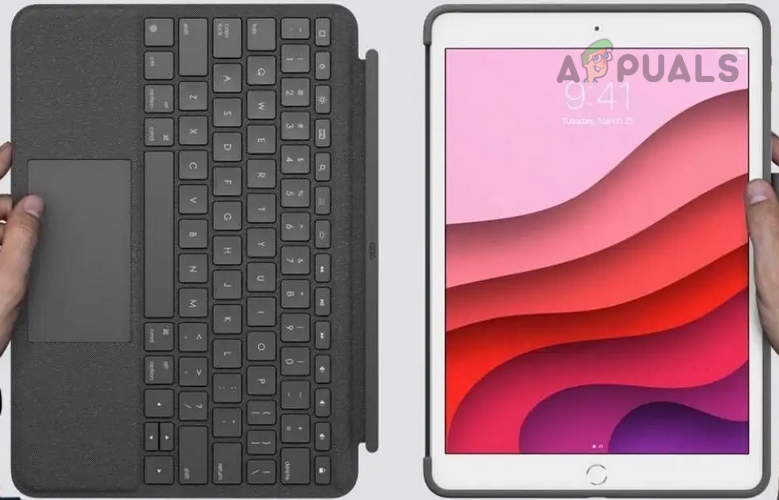
Disconnect the iPad’s Keyboard from the iPad - If not, fold the iPad’s keyboard to the back (in the viewing position) and wait for a minute.
- Return the keyboard to the typing position and check if the keyboard is working normally.
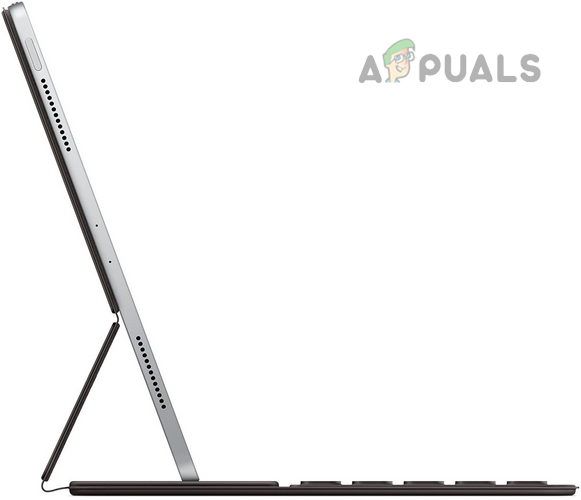
Connect the Keyboard in the Typing Position With the iPad - If that did not work, disconnect the iPad’s keyboard and force restart the iPad.
- Put the keyboard in the typing position and connect the keyboard to the iPad. Check if the problem is solved.
15. Clean the Connectors of the Keyboard and iPad
If debris or dust accumulates on the keyboard or iPad connectors, it will prevent a proper connection between the devices and will cause the keyboard to malfunction. In such a scenario, cleaning the connectors of the iPad and keyboard will resolve the issue.
- Disconnect the keyboard from the iPad and power off the iPad.
- Grab a Q-tip and use it to gently clean the connectors of the iPad and keyboard. You can also use a pencil eraser, ink eraser, or dry lint-free cloth.

Clean the Connectors of the iPad - Power on the iPad and connect the keyboard to the iPad. Check if the issue is resolved.
- If not, disconnect the keyboard from the iPad and power off the iPad.
- Clean the connectors with an electrical contact cleaner and a Q tip (or something similar). You can use rubbing alcohol, isopropanol wipes, hand sanitizer, eyeglass cleaner, or DeoxIt D5. Make sure the cleaner does not go inside the iPad or keyboard.
- Wait till the cleaner dries out. Usually, it takes around 30 minutes.
- Power on the iPad and connect the keyboard. Verify if the keyboard is working correctly.
16. Reset the Network Settings of the iPad to the Defaults
Apple devices, including iPads, are designed to be cautious when connected to public or non-trusted networks. If the device senses a potential security threat, it will disable the keyboard input to protect your privacy and security. Sometimes, disconnecting the device from the network will not be enough to restore full functionality.
- Navigate to Settings > General > Reset.
- Tap on Reset Network Settings and after resetting, restart the pad. See if the keyboard has started to work.

Reset the Network Settings of the iPad
17. Reset All Settings of the iPad to the Defaults
If a necessary setting on the iPad has gone invalid or if an OS update has caused a setting to conflict with the keyboard operation, the keyboard will malfunction. In this situation, resetting all the settings on the iPad will resolve the issue.
This process will erase all saved settings, so it is important to back up important settings.
- Navigate to Settings > General > Reset.
- Tap on Reset All Settings and once done, restart the pad. Check if the iPad’s keyboard is operating properly.
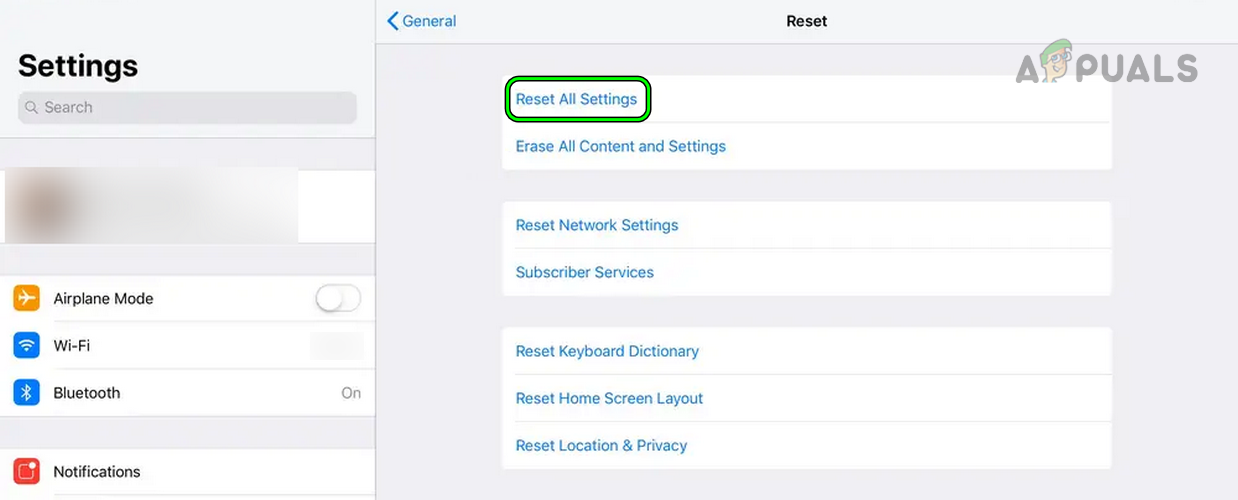
Reset All Settings of the iPad
18. Reset the iPad to the Factory Defaults
If your keyboard works well with other devices and you’ve tried all the previous troubleshooting methods without success, the root of the problem might lie in your iPad’s operating system (OS). It’s possible that a disrupted OS update resulted in core system modules – including those responsible for keyboard configurations – becoming invalid. In this scenario, restoring your iPad to its factory settings could be the solution.
Through the iPad Settings
- Navigate to Settings > General > Reset.
- Tap on Erase All Content and Settings and follow the prompts to reset the iPad.

Erase All Content and Settings of the iPad to Factory Reset it - Once done, set up the iPad as a new device (without restoring from a backup), and hopefully, that will make the iPad’s keyboard work.
Restore Through iTunes
If the above did not work reinstalling the iPadOS on the iPad through iTunes will clear the problem. Also, move the older backups of the iPad to another location in the iTunes directory.
- Launch iTunes and navigate to Help > Check for Updates.
- Install updates (if any) and close iTunes.

Check for iTunes Updates - Power off the iPad and press/hold the Home button of the iPad. If there is no Home button on your iPad’s model, press and hold the iPad’s Top button.
- While keeping a hold of the Home or Top button, connect the iPad to the PC by a USB cable.
- Keep on holding the iPad’s button until the Recovery Mode screen is shown (as below).
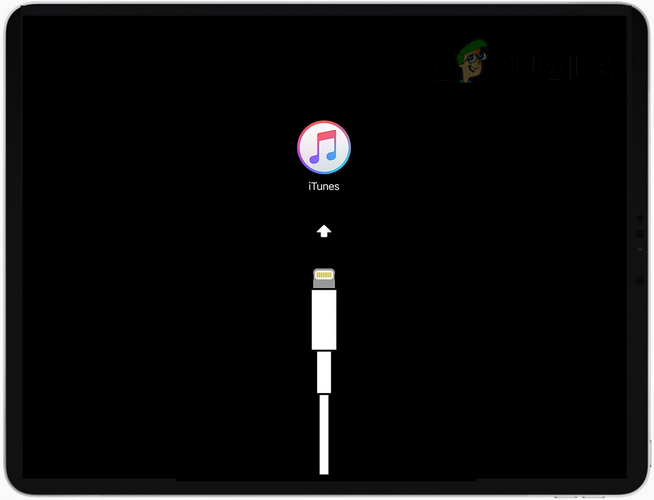
Connect iPad in the Recovery Mode to the PC - Release the button and launch iTunes on the PC (if not launched automatically).
- In the Devices tab, click on iPad and open Summary.
- Click on Restore and wait till the process finishes.

Restore iPad Through the iTunes - Once done, Eject and disconnect the iPad from the PC.
- Set up the iPad as a new device and hopefully, the iPad’s keyboard would be working properly.
If the keyboard does not work even after going through all the above, get your keyboard checked for a hardware error or contact support (Apple or keyboard manufacturer). If the issue is hardware-based, then you may ask for a replacement (if under warranty) or purchase a new one. It will be better to try another keyboard on the iPad before buying a new keyboard as the issue could also be iPad-related.
FAQs
Chances are that the keyboard of your iPad may be broken but before biting the bullet of getting a new one, try the methods discussed above. If these methods fail, then either the keyboard is faulty or the issue is with the iPad itself.
To reset the soft iPad keyboard, go to iPad Settings > General > Reset > Reset Keyboard Dictionary. To reset the hard Apple iPad keyboard, press/hold the Shift and Options keys. While holding these buttons, click on the Bluetooth icon in the menu bar and once the menu is opened, release the held keys. In the menu, go to the required keyboard, and select Factory Reset. Third-party wireless keyboards may have a reset button or try the following method. Power off the keyboard and press/hold the ESC key. While holding the key, power on the keyboard and wait for 5 seconds. Release the key and the keyboard’s light may flash for a few seconds. Once done, the reset operation is complete.
Turn on your iPad and make sure it is connected to the Internet. Detach the keyboard from the iPad by removing it from the smart connector. Wait for 10 seconds and attach back the keyboard. If an update is available, you will get a notification of an Accessory Update Available. If so, tap on Update.
Go to iPad Settings > General > Keyboard > Keyboards. Tap on Add a new keyboard and add the required keyboard. If the keyboard does not work, make sure the language of the required keyboard is added under Settings > General > Language and Regions.
 Reviewed by
Reviewed by